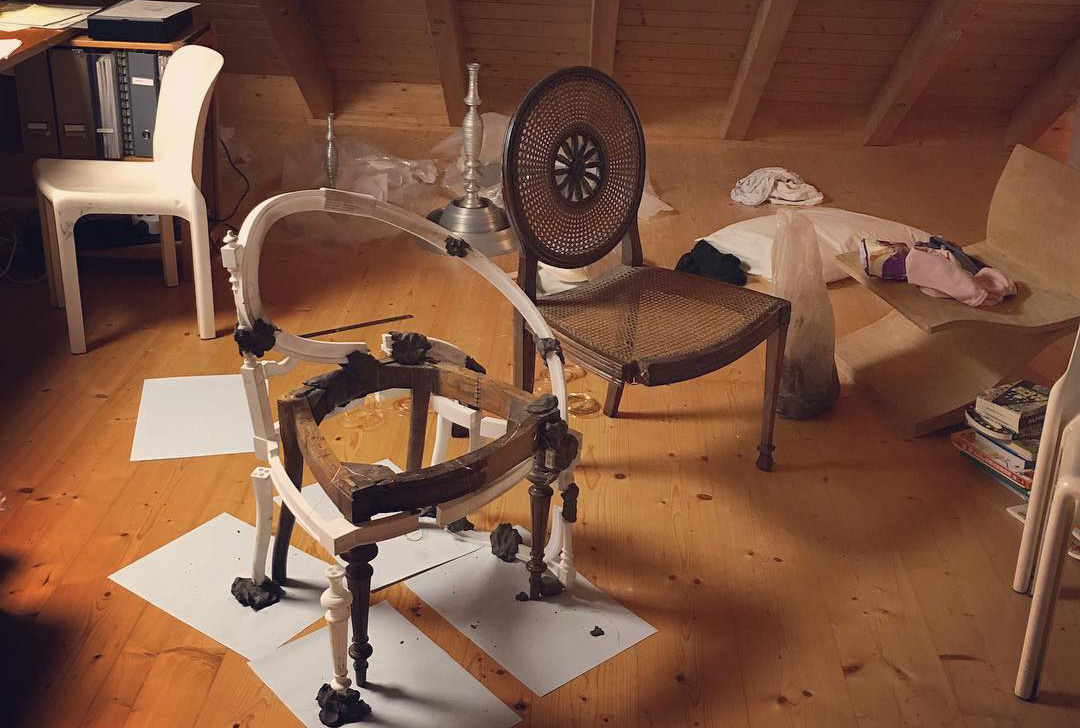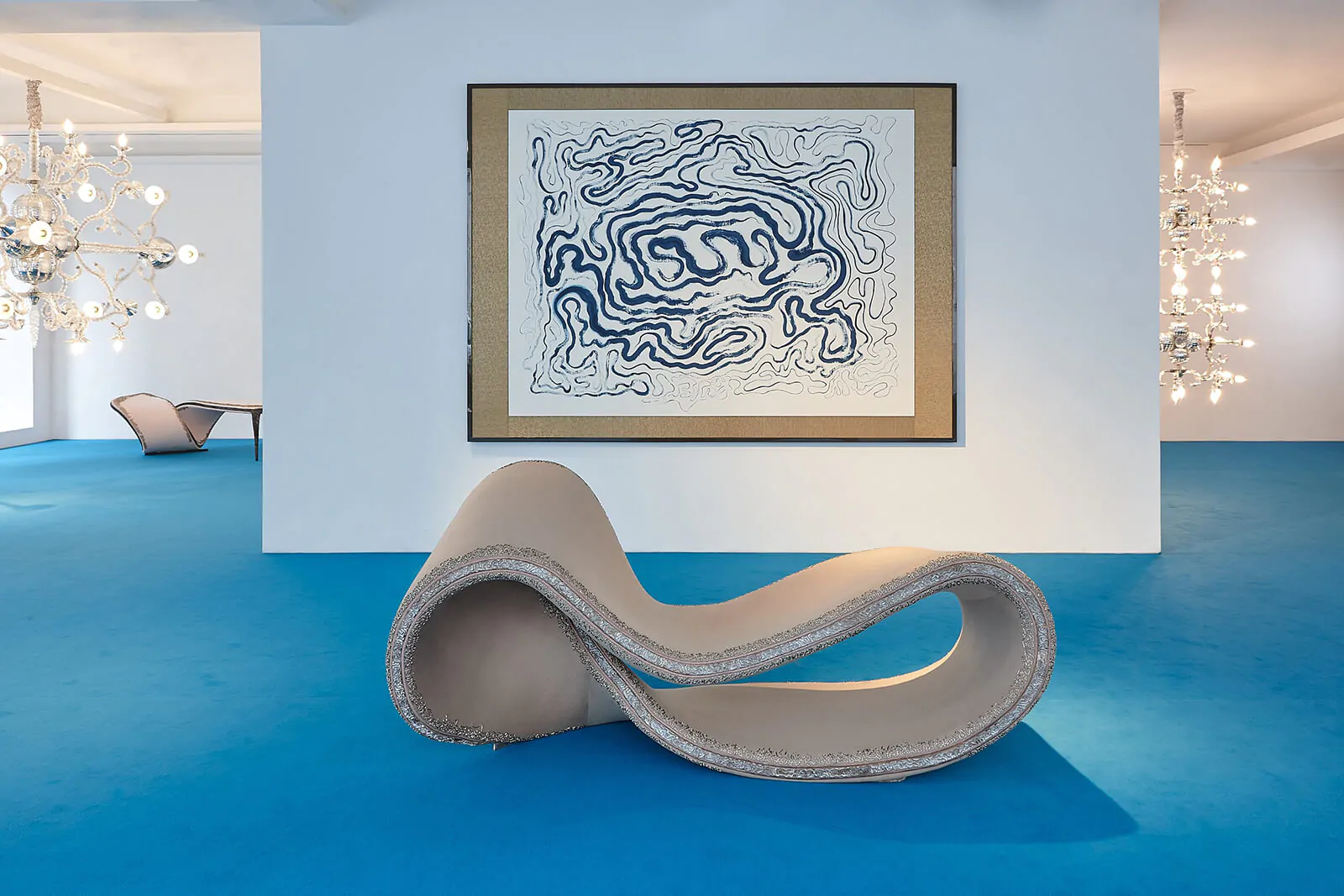Working process
Working process & Solo show at David Gill

Working Process
Always on the outlook for contrasts, trying to search what contemporary sculpting can do with an antique piece. With light elegance, most rewarding I find this in heavy and sturdy work. Modern production methods mimick ancient, artisan ways. Deconstructing thoughts and materials, breaking it down to enter the core. Perhaps that is my personal viewpoint on modern works. Try to be complete, harbour contemporary and historical means. Constructive and deconstructive at the same time. Telling a story of mentality, where past and future are visible, facing each others juxtapositions, obtaining the belief of completeness and therefore liberation. The work can now stand in all times. This attitude started to become important during my study period. After finishing the school of cabinet making I was in search of an intellectual base of what I have learned to do with my hands. I signed up art school and design school. Being admitted to both I had to choose. Perhaps at that age I had not crystallized yet what the difference between art and design would mean. I chose eventually the design path but revealing that I am always interested in the artistic manifestation of design. I studied simultaneously Philosophy during that period. Or at least joined classes and followed reading lists, being mostly interested in the history of philosophy. At the Design Academy Eindhoven (the Netherlands) I started to deconstruct old, leftover, not popular antiques. The scent of many outlived homes, being damaged and overused delivered to me instantly that intellectual aspect I was actually searching for, during school lessons that were far too rigid and one dimensional for me. It revealed a story of the footprint of Man and its environment. This aspect was only then interesting when laid against the unknown identity of my idea of what futuristic work should be. Work that still must proof his good reason for existence, exciting, new work. So I tried to put these entities together by pulling or extruding classical ornaments like gum or how printing mistakes could do, in search of something that would hive both the historical and the modern. As if I tried to lure the history into the modern times. This is in a nutshell the basis of my work and my direct provision of tools. I slowly add some new additions to my concept, lately I am quite interested in the idea of growth. I have explored this part in my soloshow with Carpenters Workshop Gallery. We called the show Vanishing Point and it comprises furniture pieces that grow from small to large or visa versa. The idea to integrate this conception was after seeing the birth of my first child.

Solo show at David Gill
The Occidental Artisan is a new body of work, anchored by a group of benches and chairs whose disorientating, anthropomorphic forms are distinguished with a restrained, pre century aesthetic. The seat and the sitter as two bodies interacting, each a reflection of the other. ‘I see the chair as a human shape that holds us, I look at a bench and ask, how does it move, where does it turn or twist at the waist?’ Calligraphic painting, and the sheer physicality of making it, evoke the bodily interpretation and experience of design; using calligraphy to ‘look for shapes.’ The sweeps and curls of Banquette, Gallivant, Lemniscate and Tao Tie Man are 3-D expressions of the inky brush strokes. Exploring time, history, fine art and mathematics is my practice, but always with beauty as the endgame. ‘I like taking mathematical thoughts to do something elegant with it,’ It is apparent in the Lemniscate chair. An embroidered Mobius Strip, this piece is the expression of the process of disorientation. ‘I want to make things that are simple but I find it necessary to place considerable obstacles in my way’. Artisanal, even archaic methods speak to a care of materials, but also to a preoccupation with what I call ‘agelessness.’ The works are redolent of ancient worlds and other eras, anticipating an uncertain future. ‘I like the idea they might have come out of the ground, that the marks of time are visible on their surfaces. Perhaps they were discovered on an archaeological dig’. In a departure from my earlier work, especially the Lathe series [2006-2016], I eschewed the use of digital technology, honouring instead the presence of the hand. ‘We don’t want to unlearn our instinctive ways of making and relinquish our souls to the robots,’ my hand might be evident in the faintly oxidized patina on the bronze structures of the seats, the upholstery we fit ourselves and then it is sent to couture embroiderers with drawings as guidance, horsehair stuffing I do prefer for its sculptural malleability. Three chandeliers, created in Murano, the largest measuring 4 metres in length, working with glass for the first time. Each one is made from a cluster of smaller pendent lights, forming matrices that are perfectly balanced yet ornate and strange; relics of another, unidentifiable time.